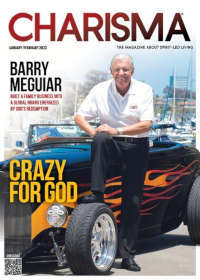Report Claims ‘Deaths of Despair’ May Be Linked to Decline of Faith in America
Read Time: 2 Minutes 37 Seconds
“Deaths by despair,” including suicide, drug and alcohol abuse, may be fueled by declining faith in America, a new report claims.
The study, a working paper titled “Opiates of the Masses: Deaths of Despair and the Decline of American Religion,” authored by Tyler Giles, Daniel M. Hungerman and Tamar Oostrum of the National Bureau of Economic Research in Cambridge, Massachusetts, says these types of deaths have dramatically increased among middle-aged white Americans in the late 20th century due to “lower participation in organized religion that was preceded by a repeal of blue laws that prohibited commercial activities on Sunday.”
In essence, the report says that the “collapse of religion in the U.S. may be driving a wave of suicides, drug overdoses and alcohol abuse deaths among the white working class. Research led by Wellesley College in Massachusetts says these deaths are rooted in poor mental health.
The Daily Mail of London recently reported that fewer Americans are attending church these days. The article, which quotes statistics from the American Enterprise Institute, says that religious service attendance never bounced back after the COVID pandemic, with an 8% drop being the normal in an “increasingly faithless” U.S.
“We show the initial rise in deaths of despair in the U.S. was preceded by a large decline in organized religious participation and that both trends were driving by middle-aged Americans,” researchers wrote in their conclusion of the study.
The data from the study was gathered from the Centers for Disease Control (CDC) and on religiosity from the General Social Survey. The research team reviewed more than a million deaths from alcohol abuse, drug overdoses and suicides from the early 1970s to the early 2000s across the U.S.
The GSS is a biennial survey that gauges Americans on their religion and social attitude.
The study also looked at the proportion of Americans that attended church weekly over the same period. Researchers “focused on middle-aged white adults who did not go to college because deaths of despair rose in this group earlier than in other demographics,” The Daily Mail reported.
“We know of no other cultural phenomenon involving such large, widespread changes in participation prior to the initial rise in U.S. mortality, nor do we know of any other phenomenon that matches the seemingly idiosyncratic patterns observed for mortality: seen for both men and women, but not in other countries, and in both rural and urban settings, but driven primarily by middle-aged, less educated white individuals,” the study explained. “We also show that religiosity and the rate of deaths of despair are negatively correlated across states; states with high levels of religiosity have suffered less from mortality due to alcohol, suicides or drug poisonings…”
 The study also concluded that “The rise in mortality was preceded by a decline in religiosity among the middle-aged less-educated white demographic. This change in religious practice was large, concerns a phenomenon well-known to be related to health and well-being. [It was also] driven by the same group whose mortality subsequently began to rise and occurred just before the increase in mortality.”
The study also concluded that “The rise in mortality was preceded by a decline in religiosity among the middle-aged less-educated white demographic. This change in religious practice was large, concerns a phenomenon well-known to be related to health and well-being. [It was also] driven by the same group whose mortality subsequently began to rise and occurred just before the increase in mortality.”
Researchers suggested that when people stopped attending church, they lost the “positive external benefits” of being part of a religious community, including social support and feelings of companionship.
The report also suggested that when “so many people stopped attending church, some faith groups may also have collapsed, leaving them unable to support members.
Bring Charisma magazine home with a subscription today!
Shawn A. Akers is the online editor at Charisma Media.




























































